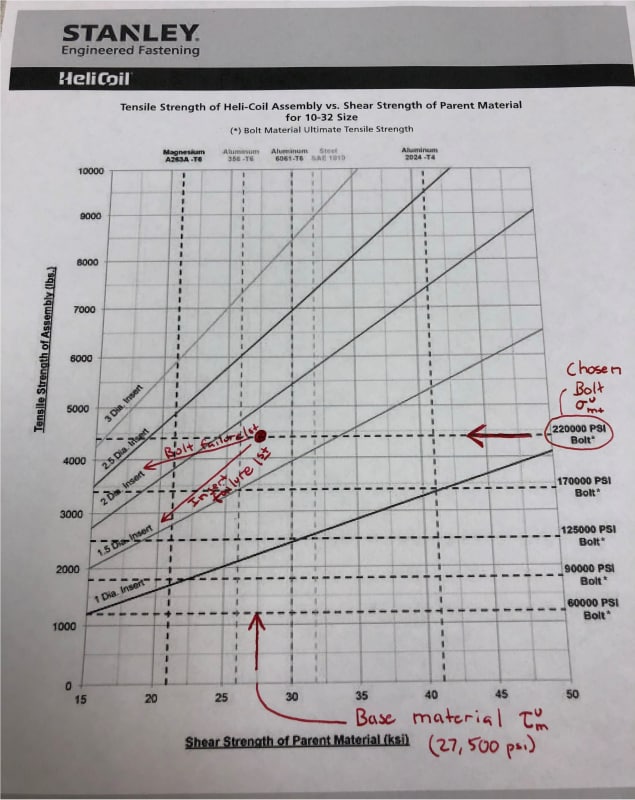I must be missing something obvious here but what extra benefit will a helicoil on a standard 5000 or 6000 series aluminium give (or any other insert that is simply tapped on a weaker material for that matter), compared to tapping directly on the AL plate?
In both cases you have a connection consisting of a strong steel thread (either the screw itself or the external thread of the helicoil) against a weaker aluminium thread isn't it? with the helicoil you just "push" the problem to a similar connection of slightly larger diameter. There surely must be another benefit apart from the slightly extra load that the larger diameter on the soft surface can accept for which to opt for helicoils on aluminium?
I can see the gains on inserts that employ a stronger, permanent connection to the weak material (pressed or glued strongly) but ones that simply thread into it? why?
In both cases you have a connection consisting of a strong steel thread (either the screw itself or the external thread of the helicoil) against a weaker aluminium thread isn't it? with the helicoil you just "push" the problem to a similar connection of slightly larger diameter. There surely must be another benefit apart from the slightly extra load that the larger diameter on the soft surface can accept for which to opt for helicoils on aluminium?
I can see the gains on inserts that employ a stronger, permanent connection to the weak material (pressed or glued strongly) but ones that simply thread into it? why?

